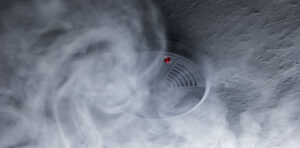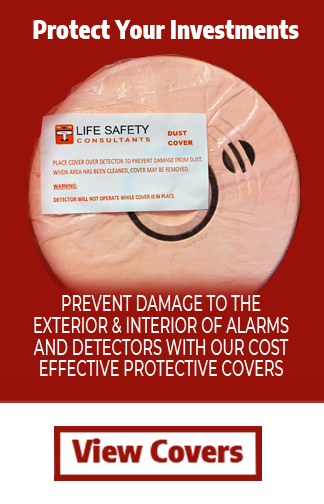There are two types of smoke alarms: photoelectric and ionization. With photoelectric, a steady beam of light is used. If and when smoke particles enter the internal chamber of the alarm, particles scatter the light beam and redirect it to a photocell, triggering the alarm to go off. Ionization alarms use ions, electrons and electrodes. When smoke enters the ionization chamber, it “sticks” to the ions, disrupting the chemistry and activating the alarm. So that’s how the two different types of smoke alarms work.
Sometimes smoke alarms malfunction. Why does this happen? What are some things that trigger a commercial smoke detector, even when it’s not meant to “go off?”

Neighboring Locations
Well, where is the alarm placed? If it’s too close to cooking equipment, you might get false alarms. Overcooked food often triggers alarms! How about placing an alarm too close to a door or window… smoke from outdoors could come inside and falsely set off the alarm.
High Humidity
Sometimes steam or even high humidity can trigger an alarm. Did you know that high humidity carries dense moisture particles which an alarm could confuse for smoke particles? It happens. Also, if there’s a steamy bathroom in your building and the alarm is close to it, someone’s hot shower could trigger an alarm.
Other External Factors
What about insects? Sometimes they sneak into the chamber of a detector and interfere with the sensors. Similarly, dust can “get in there,” too, and affect the alarm. Have you dusted the interior and exterior of your alarms lately?
Sometimes strong chemicals nearby can set off false alarms.
And, finally, alarms can be triggered when the batteries are low and need to be changed.
Do you need new commercial smoke alarms and sensors? Call Life Safety Consultants of Palm Coast, FL, at 888-557-0558 to speak with a representative about all your commercial smoke alarm needs.

